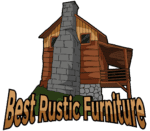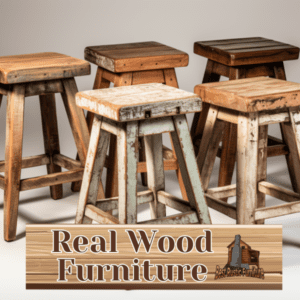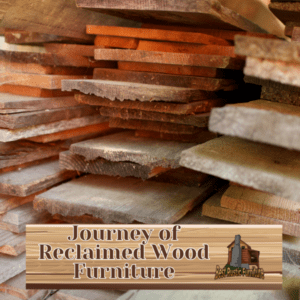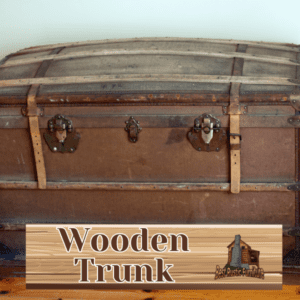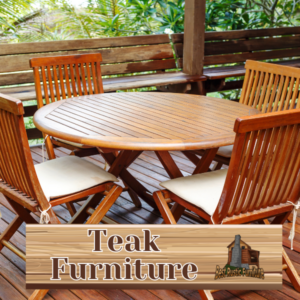
The concept of upcycling has gained significant traction in the world of rustic design, turning waste materials into remarkable and innovative creations. This article delves into the rise of upcycling in rustic design, exploring its definition, benefits, popular materials, techniques, and DIY projects that embrace this sustainable trend. Upcycling is the process of transforming discarded items or materials into new, improved, and valuable products. Unlike recycling, which involves breaking down materials to create new ones, upcycling repurposes existing items with minimal processing. The benefits of upcycling in rustic design are multifaceted, encompassing environmental sustainability, the creation of unique and one-of-a-kind pieces, and cost-effectiveness. Reclaimed wood, salvaged metal, and vintage fabrics and textiles are popular materials used in upcycled rustic designs. Techniques such as repurposing, refinishing and restoring, and combining different materials are employed to breathe new life into discarded objects. DIY upcycling projects for rustic design include upcycled pallet furniture, vintage suitcase shelves, and mason jar lighting fixtures. By embracing the upcycling trend, rustic design enthusiasts can create visually appealing spaces while promoting sustainability and reducing waste.
Key takeaways:
- Environmental sustainability: Upcycling in rustic design promotes sustainability by reducing waste and minimizing the need for new materials, helping to protect the environment.
- Unique and one-of-a-kind pieces: Upcycled furniture and decor items add character and individuality to rustic design, creating a unique and personal space.
- Cost-effective: By repurposing old or discarded materials, upcycling allows for budget-friendly alternatives in rustic design, offering creative and affordable solutions.
The Rise of Upcycling in Rustic Design
The rise of upcycling in rustic design has become a popular trend in recent years. People are increasingly embracing the idea of repurposing old and discarded materials to create unique and sustainable pieces for their homes. Not only does the rise of upcycling in rustic design reduce waste and promote environmental consciousness, but it also adds a charming and authentic touch to rustic interiors. Whether it’s transforming old pallets into coffee tables or using reclaimed wood for wall accents, the rise of upcycling in rustic design allows for creativity and individuality in design. Embracing this trend can help reduce our ecological footprint while adding character to our living spaces.
What is Upcycling?
Upcycling refers to the process of transforming discarded or unwanted materials into new products of higher quality or value. So, what is Upcycling? Unlike recycling, which breaks down materials, upcycling involves repurposing them creatively. This sustainable practice reduces waste and promotes environmental responsibility. Upcycled designs often have a rustic charm and unique character, adding a touch of creativity to your space. Did you know that upcycling not only reduces the strain on natural resources but also fosters innovation and encourages resourcefulness in design?
How is Upcycling Different from Recycling?
Upcycling and recycling are two distinct processes. Unlike recycling, upcycling involves transforming waste materials into new products without breaking them down. Recycling, on the other hand, breaks down materials to create fresh items. Upcycling puts emphasis on creativity and maintaining the original form and quality of materials, resulting in one-of-a-kind and unique pieces. This approach reduces the reliance on virgin materials, minimizes waste, and promotes sustainability. When implementing upcycling in rustic design, materials like reclaimed wood, salvaged metal, and vintage fabrics are repurposed, resulting in stunning and environmentally-friendly pieces. Embracing the upcycling trend in rustic design allows for the construction of beautiful and sustainable spaces.
The Benefits of Upcycling in Rustic Design
Discover the wonders of upcycling in rustic design! From promoting environmental sustainability to creating unique and one-of-a-kind pieces, the benefits of upcycling are vast and exciting. Not only does it reduce waste and preserve resources, but it also adds a touch of character and charm to your space. And the best part? Upcycling is not only a creative endeavor but also a cost-effective solution. Dive into the world of upcycling in rustic design and unlock the magic of turning waste into wonder.
1. Environmental Sustainability
Environmental sustainability is one of the key benefits of upcycling in rustic design. By repurposing and reusing materials such as reclaimed wood, salvaged metal, and vintage fabrics, upcycling helps to reduce waste and minimize landfill contributions. This practice actively promotes a more environmentally sustainable and eco-friendly approach to design and production. By incorporating upcycled pieces into rustic spaces, you not only contribute to the uniqueness and individuality of the design, but also support the goal of environmental sustainability. Embracing the upcycling trend in rustic design allows for the creation of beautiful and functional pieces without the need to purchase new materials. It is a cost-effective solution that transforms waste into wonderful and sustainable design solutions.
2. Unique and One-of-a-Kind Pieces
Incorporating unique and one-of-a-kind pieces is a fundamental aspect of upcycling in rustic design.
- Reclaimed wood: Give new life to old barn wood or discarded furniture by repurposing it into rustic shelves, tables, or accent pieces.
- Salvaged metal: Transform old tin cans, horseshoes, or rusty metal signs into artful decorations or functional items like candle holders or planters.
- Vintage fabrics and textiles: Source antique linens, quilts, or curtains to create custom pillow covers or upholster vintage chairs for a touch of nostalgia.
3. Cost-Effective
In rustic design, upcycling can be a cost-effective way to create unique and sustainable pieces. Here are some reasons why upcycling is cost-effective:
- Save money on materials: Upcycling offers the opportunity to repurpose existing items, reducing costs and saving money on materials.
- DIY potential: Upcycling projects empower you to do them yourself, eliminating labor costs and contributing to their cost-effectiveness.
- Opportunistic finds: By finding discarded items or materials for free or at low cost, you can maximize cost savings when upcycling.
- Longevity: Upcycled pieces tend to be more durable and sturdy compared to mass-produced items, reducing the need for frequent replacements and making them cost-effective in the long run.
Consider upcycling old wooden pallets into furniture or transforming vintage suitcases into shelves. With a dash of creativity, you can accomplish a cost-effective rustic design while minimizing waste.
Popular Upcycled Materials in Rustic Design
In the world of rustic design, upcycling has become a powerful trend that transforms waste into wonder. And when it comes to upcycled materials, there are a few that are particularly popular. We’re diving into the realm of rustic design and exploring the wonders of reclaimed wood, salvaged metal, and vintage fabrics and textiles. Get ready to discover the beauty, character, and sustainability that these materials bring to the world of design.
1. Reclaimed Wood
Reclaimed wood is a highly sought-after material in rustic design because of its distinctive characteristics and positive impact on the environment. This term refers to wood that has been salvaged from old buildings, barns, or other structures, and repurposed for new projects. The use of reclaimed wood not only helps combat deforestation but also minimizes waste. Additionally, it imparts a charming and weathered look to furniture, flooring, and other decorative elements. Due to its natural variations in color, texture, and imperfections, each piece made from reclaimed wood becomes truly unique and one-of-a-kind. By incorporating this material, you not only infuse any rustic design with warmth and charm but also contribute to a more sustainable and eco-friendly approach to interior design.
2. Salvaged Metal
Salvaged metal is a sought-after material in rustic design due to its distinctive, weathered appearance and long-lasting nature. It can be creatively transformed into a variety of furniture pieces, including chairs, tables, and decorative accents like wall art or lighting fixtures. Incorporating salvaged metal contributes to the environmental sustainability of upcycling by reducing waste and minimizing the use of new resources. By repurposing discarded objects such as old barrels, car parts, or metal scraps, designers can craft unique and captivating pieces that bring character and allure to rustic spaces. Embracing salvaged metal within your rustic design not only enhances visual appeal but also fosters a more environmentally conscious and eco-friendly approach to interior design.
3. Vintage Fabrics and Textiles
Vintage fabrics and textiles are popular materials in rustic design due to their unique charm and history. They add character and a sense of nostalgia to any space. Here are some options for incorporating vintage fabrics and textiles into your rustic design:
- Vintage quilts or blankets can be repurposed as wall hangings or used to cover furniture for a cozy touch.
- 2. Antique lace and doilies can be used as table runners or to create delicate curtains.
- 3. Vintage tapestries can be hung on the walls as statement pieces or used as decorative throws.
Don’t be afraid to mix and match different patterns and textures to create a visually interesting and unique look. Vintage fabrics and textiles are not only eco-friendly but also bring a touch of history and craftsmanship to your rustic design.
Upcycling Techniques for Rustic Design
Discover the captivating world of upcycling techniques for rustic design. Unleash your creativity as we explore the art of repurposing, refinishing, and restoring, and the magic of combining different materials. Learn how to transform waste into wonder and breathe new life into old objects. Get ready to be inspired by the ingenuity and beauty of upcycled rustic designs that embody sustainability and style. Join us on this journey of turning ordinary items into extraordinary treasures.
1. Repurposing
- Repurposing is a key element of the upcycling trend in rustic design, enabling the transformation of old or discarded materials into new, functional, and decorative pieces.
- Here are some steps to successfully repurpose items in rustic design, incorporating the keyword “repurposing“:
- Identify the item: Look for objects that can be given a new purpose, such as old doors, crates, or windows.
- Assess its potential: Determine how the item can be repurposed or incorporated into a rustic design. For example, an old ladder can be turned into a bookshelf or a vintage suitcase into a unique coffee table.
- Prepare the item: Clean and repair the item as needed, ensuring it is safe and sturdy for its new use.
- Get creative with the design: Consider how the repurposed item can fit into your overall rustic design theme. You can sand or paint the item to give it a fresh look or maintain its weathered charm.
- Put it to use: Incorporate the repurposed item into your space, whether it’s as a functional piece of furniture, a decorative accent, or a statement piece.
2. Refinishing and Restoring
Refinishing and restoring furniture is a fundamental component of upcycling in rustic design. Here are the steps to successfully refinish and restore your piece of furniture:
- Assess the piece: Determine if it requires cleaning, repairs, or any structural modifications.
- Clean: Eliminate dirt, grime, and old paint or finish using appropriate cleaning products and techniques.
- Repair: Mend any broken parts, loose joints, or damaged areas using suitable materials and techniques.
- Sand: Prepare the surface by sanding it to create a smooth and even foundation for the new finish.
- Choose a finish: Opt for an eco-friendly finish that enhances the rustic charm, such as stains, paints, or sealants.
- Apply the finish: Adhere to the manufacturer’s instructions to evenly apply the chosen finish and allow it to dry completely.
- Protect and maintain: Utilize proper protective measures, such as wax or sealants, to preserve the restored finish for the long term.
3. Combining Different Materials
Combining different materials is a significant aspect of upcycling in rustic design. It involves the amalgamation of diverse elements to craft exclusive and visually pleasing pieces. This method enables the conversion of ordinary objects into functional and artistic items. For instance, in rustic design, the fusion of reclaimed wood and salvaged metal can yield breathtaking furniture pieces or decorative accents. By incorporating vintage fabrics and textiles along with other materials, a rustic charm can be achieved. The process of combining different materials not only imparts character to the final product but also fosters sustainability by giving new purpose to items that would have otherwise been discarded.
DIY Upcycling Projects for Rustic Design
Looking to infuse your space with rustic charm? Look no further! In this section, we’re diving into the world of DIY upcycling projects for rustic design. Get ready to unleash your creativity as we explore the wonders of upcycled pallet furniture, the unique appeal of vintage suitcase shelves, and the cozy ambiance created by mason jar lighting fixtures. Discover how you can transform waste into wonder with these rustic-inspired projects that will add both style and sustainability to your home.
1. Upcycled Pallet Furniture
- Find used pallets from local businesses or online platforms to create your unique piece of upcycled pallet furniture.
- Before starting, make sure to inspect the pallets for any damage and remove nails or splinters.
- Decide on the furniture piece you want to make and take the measurements as part of your design plan.
- With a pry bar or hammer, carefully disassemble the pallets and separate the wood pieces.
- To achieve a smooth surface, sand down the wood before using it to construct your furniture piece.
- Using the pallet wood, assemble the furniture piece according to your design plan and ensure a sturdy construction.
- Enhance the rustic look and durability of your upcycled pallet furniture by applying a protective finish or stain.
- To personalize your creation, add finishing touches such as cushions, pillows, or paint accents.
2. Vintage Suitcase Shelves
Vintage Suitcase Shelves are a unique and creative way to incorporate upcycling into rustic design. Here are a few key points to consider when exploring this trend:
- Repurposing: Transforming Vintage Suitcases into functional shelves by adding brackets or hooks and mounting them on walls.
- One-of-a-kind: Each Vintage Suitcase has its own history and character, making the resulting shelves truly unique and one-of-a-kind.
- Rustic Charm: The aged and worn appearance of Vintage Suitcases adds a charming rustic touch to any space.
- Storage Solution: Providing practical storage space for displaying books, plants, or decorative items.
- DIY Project: Creating Vintage Suitcase Shelves is a great do-it-yourself project that allows you to customize the design to fit your personal style.
- Sustainability: Upcycling Vintage Suitcases reduces waste and contributes to a more sustainable lifestyle.
By incorporating Vintage Suitcase Shelves into your rustic design, you can add a touch of nostalgia, personality, and functionality to your space.
3. Mason Jar Lighting Fixtures
Mason Jar Lighting Fixtures have become a popular upcycling project in rustic design. They serve as an environmentally friendly addition that adds a charming and rustic touch to any space. Here are three reasons why incorporating Mason Jar Lighting Fixtures is a great choice:
- Versatility: Mason Jar Lighting Fixtures offer a wide range of options, allowing you to create various types of lighting fixtures like pendant lights, wall sconces, or table lamps.
- DIY-friendly: These lighting fixtures are relatively easy to make, making them an ideal project for DIY enthusiasts. With a few simple steps and some creativity, you can transform a regular mason jar into a unique piece of lighting.
- Ambiance: Mason Jar Lighting Fixtures emit a warm and cozy glow, setting the mood and creating an inviting atmosphere in any room.
Embracing the Upcycling Trend in Rustic Design
When you embrace the upcycling trend in rustic design, you can create unique and environmentally-friendly spaces while adding a touch of charm and character to your home. Here are some suggestions on how to incorporate this trend:
- Embrace the upcycling trend by repurposing old furniture: Transform old chairs or tables by giving them a fresh coat of paint or adding new hardware.
- Create a DIY decor using reclaimed wood or salvaged materials: Make wall art, shelving, or decorative accents.
- Give new life to vintage items by upcycling them: Use vintage pieces like mason jars or old crates as storage or planters.
- Create a unique and balanced aesthetic by combining old and new: Mix vintage finds with modern elements.
By embracing the upcycling trend in rustic design, you not only contribute to a more sustainable lifestyle but also add a personal and cozy touch to your living space.
Some Facts About “From Waste to Wonder: The Upcycling Trend in Rustic Design”
- ✅ Upcycling old furniture is a popular trend in rustic design.
- ✅ Upcycling reduces waste sent to landfills, conserves resources, and saves energy.
- ✅ It offers an affordable alternative to buying new furniture.
- ✅ Repainting and refinishing old furniture can update and personalize it.
- ✅ Creative upcycling ideas allow for the creation of unique pieces that reflect personal style.
Frequently Asked Questions
What is upcycling and how does it relate to home decor?
Upcycling is the process of transforming waste materials or old items into new products of higher value or quality. In the context of home decor, upcycling involves repurposing and renovating old furniture or objects to create unique and personalized pieces for your home.
How does upcycling help in conserving resources?
Upcycling helps in conserving resources by reducing the demand for new materials. Instead of buying new furniture, upcycling allows you to breathe new life into existing items, reducing the need for raw materials and energy-intensive manufacturing processes.
Can I terminate contracts when upcycling furniture?
Yes, when upcycling furniture, you are not bound by any contracts. Upcycling is a creative and personal process where you have full control over the design and customization. You can choose to modify or alter furniture without any contractual obligations.
How can I reflect my personal style through upcycled pieces?
Upcycling offers a great opportunity to reflect your personal style. By repainting, refinishing, or adding unique elements to old furniture, you can create one-of-a-kind pieces that showcase your individual taste and design preferences.
Does upcycling provide an affordable option compared to buying new furniture?
Yes, upcycling is a more affordable alternative to buying new furniture. Instead of investing in costly new pieces, you can save money by upcycling and rejuvenating old furniture that you already own or finding affordable second-hand items to transform into customized pieces for your home.
Can I test new features or designs through upcycling?
Absolutely! Upcycling allows you to experiment with new features, designs, and techniques. It provides a platform for exploring your creativity and trying out innovative ideas without the fear of ruining expensive furniture. You can test different finishes, colors, and styles to create truly unique and personalized pieces.
